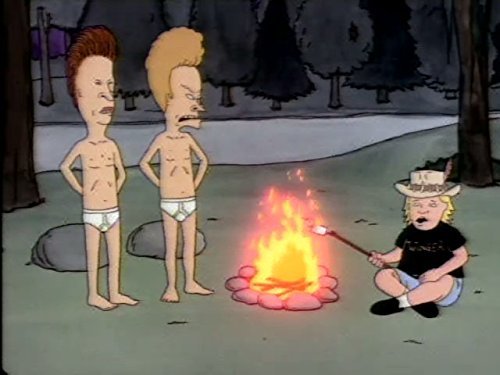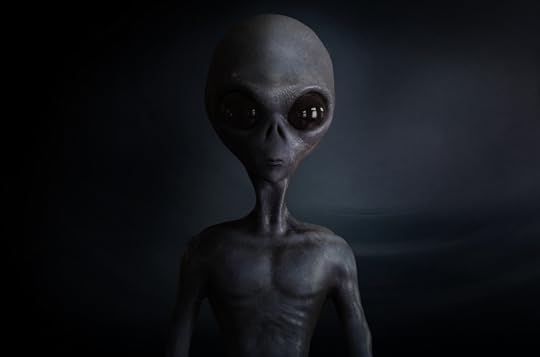Bathroom Readers' Institute's Blog, page 44
March 14, 2018
Happy Pi(e) Day!

Today is March 14, or “3/14,” which are the first three digits of that almost-magical ratio called pi. Sure, we could talk about math and circles…but looking up “pi” just made everyone here at the BRI hungry for “pie” (and pie facts).

Origins of the Word
What’s the origin of the word pie, to describe a crusted food filled with tasty things? It’s from pica, the Latin word for magpie. A pica was the word for the magpie, a bird known to collect random objects. Similarly, the food called pie began as an often random collection of ingredients.
Oldest Recipe
Oldest known pie recipe: There’s an extant one from Ancient Rome for a goat cheese and honey pie made with a rye crust.
May I have a Coffin, Please?
However, another English word for what we call pie was “coffin.” Not because they’re so sinfully delicious, but because in England a few hundred years ago, pies were primarily meat pies with high-sided walls made of crust. Dead flesh in a “box” = coffin.
Illegal Pie
Between 1657 and 1660, mincemeat pie was banned in England. Lord Protector Oliver Cromwell found the overabundance at Christmastime to be too sinful, so he outlawed and ordered the confiscation of that particular Christmas treat. (When Cromwell lost his head in 1660 and King Charles II took the throne, pie was legalized.)
Annual US Pie Sales
Annual pre-made pie sales at American grocery stories: about $700 million.
What’s Your Favorite?
According to a survey by the American Pie Council (an organization to which we pledge our undying allegiance), the most popular pies, in order, are apple, pumpkin, pecan, banana cream, and cherry.
Pie vs. Cobbler
What’s the difference between pie and cobbler, anyway? They’re mostly the same in terms of crust composition and fruit filling. The main difference: if a pie is topped, it’s topped with a crust made out of the same stuff as the rest of the crust. A cobbler is topped with a different kind of pastry or dough, usually dollops of biscuit dough.
Apple Pie
Apple pie is as American as…England. Yep—the classic dessert of the U.S. of A dates to 14th century Great Britain.
The post Happy Pi(e) Day! appeared first on Trivia Books and Facts | Uncle John's Bathroom Reader.
March 9, 2018
Happy Birthday, Barbie

Today is National Barbie Day. Why? It was on this day in 1959 that the doll was unveiled to the public for the first time, at the American International Toy Fair in New York.
TV-based Marketing Strategy
Barbie was the first toy to have a TV-based marketing strategy. That was revolutionary—lots of kids were watching the still-new novelty that was TV and Mattel marketed to them. The result: Barbie is one of the most successful toys of all time, and TV because the quickest and most effective way to make kids aware of toys.
Barbie’s Full Name
Barbara Millicent Roberts. Her longtime boyfriend, introduced in 1961 (although they broke up in 2004) is Ken, or Ken Carson.
Controversy and Sexist Stereotypes
Barbie is not without controversy—many feel it perpetuates sexist stereotypes. In 1993, a group called the Barbie Liberation Organization slipped into toy stores and switched the voice chips in Teen Talk Barbies and talking G.I. Joe dolls. The result: Hundreds of kids wound up with Barbie dolls that said “Vengeance is mine!” (And other kids got a G.I. Joe that said, “Want to go shopping?”) Barbie also may lead to wildly impossible body standards and other health issues. A 1963 model called “Babysitter Barbie” came with a Barbie-size book called Don’t Eat. In 1965, Slumber Party Barbie came up with a book called How to Lose Weight…and a bathroom scale.
The Barbie Movie
There’s a live-action Barbie movie in the works, set for release in 2020. There’s some major talent behind the scenes: It’s co-written by Juno Oscar winner Diablo Cody and will star Oscar winner Anne Hathaway, replacing original star Amy Schumer.
That’s not the first Barbie movie, however. In 1987, now major feature film director Todd Haynes (Far From Heaven, Wonderstruck, Carol) made a short film called Superstar: The Karen Carpenter Story. It’s a 43-minute movie that tells the life story of the late pop singer Karen Carpenter…told entirely through Barbie dolls. In 1990, the movie was banned because Haynes used Carpenters songs without permission.
“Barbie Girl” – The Song
In 1997, Danish pop band Aqua released a satirical song called “Barbie Girl.” An international hit sung from Barbie’s point of view, it presented the doll as a “blonde bimbo girl in a fantasy world.” Mattel sued, claiming the song tarnished Barbie’s reputation, and that the single’s packaging used “Barbie pink.” Aqua’s label, MCA countersued for defamation. (A judge dismissed both suits.)
The post Happy Birthday, Barbie appeared first on Trivia Books and Facts | Uncle John's Bathroom Reader.
March 8, 2018
The Women Who Did It First

On this International Women’s Day, here’s a look at some of history’s greatest (but overlooked) trailblazers.

Anne Bradstreet
The Tenth Muse Lately Sprung Up in America is a volume of poetry published in 1650, one of the first notable works about life in the American colonies by a resident of the American colonies. It was written by Anne Bradstreet, making her the first published female American writer.
Elena Lucrezia Cornaro Piscopia
For centuries, academics were a “boys club,” but Venetian philosopher Elena Lucrezia Cornaro Piscopia was one of the first women to receive a formal education. Studying at the University of Padua, in 1678 she became the first woman in history to receive a doctorate.
Mary Kies
First American woman to hold a patent: In 1809, Mary Kies got one for a novel method of weaving straw with silk.
Victoria Woodhull
Who was the first woman to run for president? Not Hillary Clinton. In 1872, suffragist Victoria Woodhull announced her candidacy for the Equal Rights Party. (She was also one of the first women to get rich off the stock market—Woodhull and her sister opened one of the first female-run brokerages.)
Valentina Tereshkova
Russian cosmonaut Valentina Tereshkova orbited the Earth in 1963. She was the fifth astronaut from the Soviet Union to go into orbit, and the twelfth human being to leave the planet overall.
Frances Perkins
In 1933, labor activist Frances Perkins was appointed Secretary of Labor by President Franklin Roosevelt. She’s the first female cabinet member in American history and one of the longest-serving federal department heads ever, serving for the entirety of FDR’s 12 years in office.
Janet Guthrie
Most professional auto racers choose either the NASCAR circuit or the IndyCar circuit. In the ‘70s, Janet Guthrie was one of the few racers who did both. She’s the first woman to compete in both NASCAR’s Daytona 500 as well as the Indy 500. At Daytona in 1977, she finished in 12th place (her car blew a couple of cylinders with 10 laps left) and she ran in three straight Indy 500 races in the late ‘70s, finishing in ninth place in 1978.
Tina Sjogren
In 2002, Tina Sjogren of Sweden became the first of only two women to ever ski by themselves, without a supply run, all the way to the South Pole…and then immediately do the same thing with the North Pole.
Cassandra De Peco
In 2017, Cassandra De Peco, working for the International Institute, set out of a peacekeeping mission to visit every country on Earth. She did it—De Peco became the first woman to travel to every sovereign nation on the planet, and it took her only 18 months, which is faster than the men who had done it before her.
The post The Women Who Did It First appeared first on Trivia Books and Facts | Uncle John's Bathroom Reader.
25 Years of Beavis and Butt-head

Twenty-five years ago this week, one of the most remarkable works of art in the Western canon emerged, shedding light on the big questions of life, and the very nature of existence itself. We’re talking, of course, about Beavis and Butt-head, which aired its first episode on MTV on March 8, 1993. Huh-huh, huh-huh.
Based on Real People
Horrifyingly, the two main characters are based on real people…or at least their names are. When he was in college, Beavis and Butt-head creator Mike Judge lived next door to an ill-behaved 12-year-old who called himself “Iron Butt,” because he said he couldn’t feel any pain in his rear end. He had a friend known only as “Butt-head,” and the two of them used to hang out with another kid named Bobby Beavis, who, like TV’s Beavis, had a high-pitched, cackling laugh.
Too Popular?
Just two weeks after Beavis and Butt-head debuted, MTV pulled it from its schedule. Not because it was unpopular—because it was too popular. Ratings were so high, and the network wanted more episodes as quickly as possible, but Mike Judge and his small production staff couldn’t keep up with demand. Rather than burn out viewers by running the same episodes day after day, the show went on a six-week hiatus while Judge got to work.
The Colorful Title
The show has a colorful, and for 1993, semi-profane title. But lots of people still couldn’t get it right. That year, the U.S. Senate held a hearing on TV violence. South Carolina senator Fritz Hollings tried to make an example out of Beavis and Butt-head, or as he called it, “Buffcoat and Beaver.” Creator Mike Judge once received a voice mail from an offended viewer, who thought the name of the show was “Porky’s B*******.” (The man talked so fast and with such a thick Texas drawl that he inspired the character Boomhauer on Judge’s next cartoon series, King of the Hill.)
Good for Album Sales
Half of the show’s running time was consumed with Beavis and Butt-head watching and commenting on music videos. Rarely did the two not proclaim an artist to be either good or bad, and in real life, bands that Beavis or Butt-head said were “cool” noticed a bump in record sales. For example, they praised a video by heavy metal band White Zombie. Before it was featured on Beavis and Butt-head, the group’s 1992 album sold 75,000. Immediately after it was on the show, it sold more than 300,000.
The show’s ability to dictate album sales led to a compilation of songs inspired by the show called The Beavis and Butt-head Experience. It featured a hit single: a remake of Sonny and Cher’s “I Got You, Babe,” but with Sonny Bono replaced by Butt-head.
Almost 40
The fact that Beavis and Butt-head being 25 years old might make you feel old, but consider this. The title characters were born in 1979. That means today, those quintessential idiot teenagers would be just about ready to turn 40.
The post 25 Years of Beavis and Butt-head appeared first on Trivia Books and Facts | Uncle John's Bathroom Reader.
March 7, 2018
What Did William Henry Harrison Even Do?

Harrison usually ranks at the bottom of historians’ rankings of U.S. presidents. He died a month into his term…but he still ranks above other presidents, like James Buchanan, whose mishandling of public affairs led to the Civil War. So what did Harrison actually accomplish in his short time in office to save himself from being the worst of all time?
Tough and Strong
Harrison was elected in part because of his popularity as a war hero—he led American troops in the Battle of Tippecanoe of 1811, which expelled Native Americans led by Shawnee leader Tecumseh out of what’s now Indiana. When he took office in 1841, he wanted to show that he was still tough and strong, and so he rode the Inauguration ceremony on horseback, rather than in a horse-drawn carriage which would have protected him from the rain and freezing temperatures. He eschewed a hat and overcoat for both the ride and his outdoor inaugural address—the longest in history, at about two hours. Result: 31 days later, Harrison died of pneumonia.
Congress
However, Harrison’s election, speech, short term, and death did manage to alter the political landscape. In his inaugural address, he promised to defer as much as possible to Congress in day-to-day lawmaking and to veto their actions as little as possible. However, when Congressional leader Henry Clay asked Harrison (a week into his term) to call a special session of Congress, the president said no. He figured it was fine for them to meet as scheduled—nine months later. But when Treasury Secretary Thomas Ewing told the president that the government was in such dire financial straits that it would run out of money well before that scheduled session, Harrison ordered Congress to meet. That brief impasse and then agreement helped establish the way the executive and legislative branches interact even today.
The Vice Presidential Role
Harrison’s death itself had the longest-lasting and most important effect on American history. A president had never died in office before Harrison did so in 1841, and the government realized that the Constitution wasn’t exactly clear on who should become president in such an event. The wording in the document’s Article II suggested that the Vice President take over, but it wasn’t certain if that meant the Veep would be “acting president” until another president could be elected, or if they would be a full-on president themselves. The Supreme Court and Congress decided that Vice President John Tyler would become the “real” president. A resolution passed by both houses established that succession as the law of the land. (It was added to the Constitution as the 25th Amendment in 1967.)
Presidential Widow Pensions
One other effect of Harrison’s death: the establishment of presidential widow pensions. Harrison left very little money behind to his wife, Anna. Congress granted her a year of Harrison’s salary: $25,000 (about $600,000 in today’s money) and free use of the postal service for life.
The post What Did William Henry Harrison Even Do? appeared first on Trivia Books and Facts | Uncle John's Bathroom Reader.
March 6, 2018
National Oreo Day!
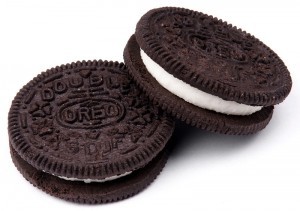
On March 6, 1912, the National Biscuit Company—later shortened to Nabisco—filed for a trademark on its chocolate cookie developed at a factory in New York City. That cookie: the iconic Oreo. Here are some facts about the cookie jar staple.
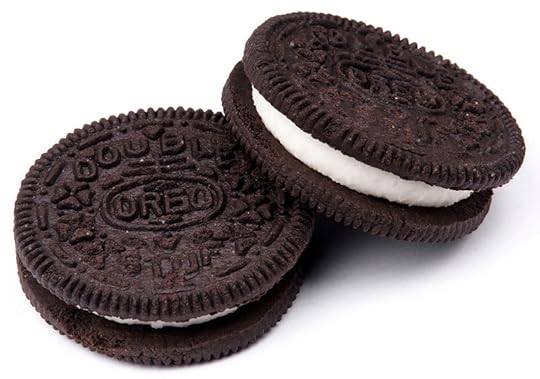
Good for Vegans!
People who try to follow a natural and organic diet eschew Oreos for the exact same reason why vegans can feel free to eat Oreos: The creme filling doesn’t have any dairy or animal-based products in it whatsoever, meaning no cream or lard.
Competition
Oreos dominate the “chocolate sandwich cookie with disc of crème filling in the center” market. Second-best seller in this cookie genre: Hydrox. Introduced by Sunshine Biscuits in 1908, they’re pretty much the same thing as Oreos, except that they’re kosher and were invented four years before Oreos.
The Name
Today, Oreos are just called Oreos, but it took a long time for Nabisco to settle on that name. The cookie was first called the Oreo Biscuit, then the Oreo Sandwich, then the Oreo Creme Sandwich, and then the Oreo Chocolate Sandwich. Sure, but just what is an “Oreo” anyway? Nabisco has never said, although it’s probably derived from a Greek word orexin, which means “appetizing.”
False Advertising!
Double Stuf Oreos have more “stuff” or crème filling versus a regular Oreo…but not twice as much. According to a study conducted by a high school math class, Double Stuf Oreos should more accurately be called “1.78 Times the Amount of Stuf Oreos.” As for the even more crème-stuffed, occasionally sold Mega Stuff Oreos, one of those has 2.68 times the filling.
The Flavors
Over the last decade, Nabisco has released more than 50 different styles and varieties, part publicity stunt, and part miracle of modern food flavoring technology. Cool Mint, Limeade, Fruit Punch, Neapolitan, Uh-Oh! (the cookie is vanilla-flavored and the filling is chocolate), Candy Corn, Birthday Cake, Cookie Dough, Watermelon, Waffles and Syrup, and Mystery. Consumers could enter a contest to guess the flavor, which turned out to be Fruity Pebbles cereal.
Chinese Oreos
Oreos initially flopped in China. Nabisco didn’t give up and kept tinkering with the cookie until sales picked up. A Chinese Oreo, therefore, is nothing like an American one. It’s a cylindrical cookie made up of layered, crispy wafers with vanilla or chocolate filling in between.
500 Billion
Total number of Oreos sold and consumed in the past 106 years: about 500 billion.
The post National Oreo Day! appeared first on Trivia Books and Facts | Uncle John's Bathroom Reader.
March 2, 2018
The Story of the Biggest “Goof” in ‘Bathroom Reader’ History
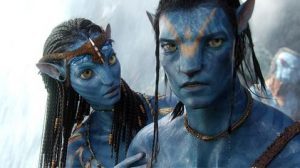
Ever wanted to be “privy” to what goes on behind closed doors at the Bathroom Readers’ Institute? Well, here’s a story about how we printed one of our biggest ever goofs.
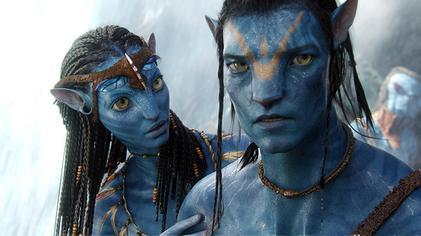
It wasn’t an error when it started.
When we make a Bathroom Reader, we research our work very carefully to ensure that it’s true. If, for some reason we get something wrong, we fix it the next time we reprint the book. That said, an article called “Not Coming to a Theater Near You” came back clean and certified correct from our fact-checker, and it ran on page 435 of Uncle John’s Slightly Irregular Bathroom Reader.
“Not Coming to a Theater Near You”
“Not Coming to a Theater Near You” was about big blockbuster movies that had been announced but which, for a variety of reasons, never got made. Leading off the article was the story of an unmade film called Avatar. Avatar never entered production because writer/director James Cameron wanted to make a completely computer generated film, and to make the film look realistic, it would’ve cost nearly half a billion dollars to make. Here’s the thing: Avatar very much got made. It didn’t get made in 1999, as the article stated, but it was released in 2009…where it went on to become the highest-grossing film of all time.
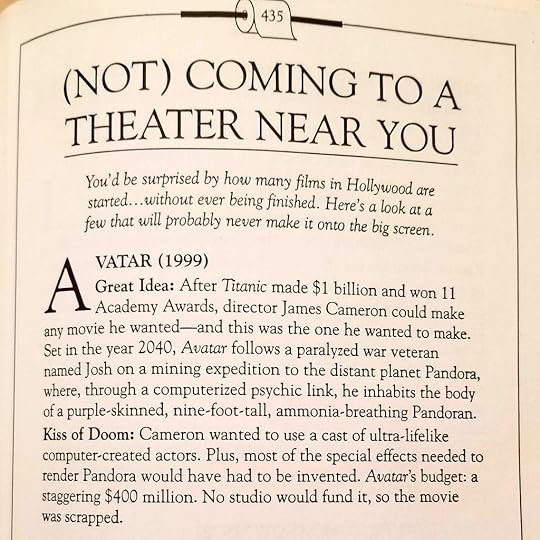
How could we not know about the most popular movie of all time?
You wouldn’t believe how many letters we’ve received about this so-called gaffe. How could we not know about the most popular movie of all time? Simple. The article appeared in a book, Slightly Irregular, that was first published in 2004. At the time of publication, Avatar was a dead project. In the five years after that piece ran, special effects technology got better (and cheaper), and James Cameron finally got to make his passion project.
The post The Story of the Biggest “Goof” in ‘Bathroom Reader’ History appeared first on Trivia Books and Facts | Uncle John's Bathroom Reader.
March 1, 2018
What Sports Did They Play at the Ancient Greek Olympics?

Historical records date the first ancient Olympic games to 776 BCE. The games were originally held every four years in Olympia, in southwestern Greece, with competitors traveling from across the region’s various states. The very first Olympics lasted just one day and had a single event—a sprint race. (This article was first published in Who Kew? )

No Biting, No Poking
Over time, more events were added. Between 396 BCE and the first century CE, the games spanned five days, including an opening and closing ceremony, a mass slaughter of one hundred oxen, a funeral ceremony in honor of a mythological hero, and a day of prayer. There were lots of sports, but no team events: everyone competed as an individual. Events included three running distances on a wide track where 20 people could run side by side, wrestling, boxing, horse and chariot races, and the pentathlon—as well as a five-event competition comprising running, long jump, discus, javelin, and wrestling. One of the toughest sports was the pankration—a primitive martial art that combined wrestling and boxing. Biting and poking out people’s eyes were banned, but this largely rule-free sport could get ugly.
What Did They Win?
The ancient Olympic games were the inspiration for the modern Olympics, which began in 1896. Unlike today’s victors, who receive a bronze, silver, or gold medal, depending on their ranking, ancient Greek Olympians were all fighting to be the sole winner of each event—the Olympionike. Immediately after the event finished, the winner would be presented with a palm leaf by a judge. The crowd would applaud and throw flowers, and tie red skeins of wool around the hands and head of the victor. At the end of the whole contest an official prize ceremony took place in the Temple of Zeus. All the victors would be presented with a crown of olive branches, known as a kotinos.
Just as today’s athletes often receive victory parades and lucrative endorsement deals on their return from the Olympics, the same was true for Greek Olympionikes, who were welcomed home as heroes by their city-states. Songs would be written in their honor, and if an athlete had won three events, he could commission a leading sculptor to create a portrait statue to commemorate his success. Many athletes were sponsored by the state, which paid for such privileges, as their heroes’ sporting achievements brought great prestige to their hometown.
The post What Sports Did They Play at the Ancient Greek Olympics? appeared first on Trivia Books and Facts | Uncle John's Bathroom Reader.
“We Accept This Award On Their Behalf”

If Uncle John were ever nominated for an Oscar, you can be sure he’d be seated in that auditorium on the night of the ceremony to hit the stage in case they called his name. Then there are these actors—they couldn’t make it, and then they won. Here’s why.
Michael Caine
Michael Caine won Best Supporting Actor in 1987 for the acclaimed comedy Hannah and Her Sisters. He couldn’t make it to the ceremony because he was busy filming a significant less acclaimed movie: Jaws 4: The Revenge, ultimately a commercial and critical flop. Of the movie, Caine later said, “I have never seen it, but by all accounts it is terrible. However, I have seen the house that it built, and it is terrific.”
Eminem
In 2003, Eminem won for Best Original Song for “Lose Yourself” from 8 Mile, a movie based on his life in which he also starred. It’s the first rap song to ever win the Award, but Eminem didn’t make the trip to the ceremony. He later said he was “sleeping that night. I just felt like I had no chance of winning” and also that he was confused—he thought Oscars were for acting, so he didn’t quite get how his song was nominated.
Melvyn Douglas
Veteran Hollywood character actor Melvyn Douglas won Best Supporting Actor in 1980 for his role in Being There. At 79, he was the oldest ever nominee in his category and he was up against the youngest ever nominee in that category—eight-year-old Justin Henry of Kramer vs. Kramer. And that’s why he didn’t bother attending. A week before the ceremony he told People he wouldn’t be attending, citing the old Hollywood adage to never go up against a child or an animal.
Paul Newman
Paul Newman is one of the best and most beloved actors in Hollywood history, and his peers rewarded him with nearly a dozen Oscar nominations. And he lost almost every time, for his roles in Cat on a Hot Tin Roof, The Hustler, Hud, Cool Hand Luke, Absence of Malice, and The Verdict. He was up again in 1987 for The Color of Money, the sequel to The Hustler in which he once again played pool hustler Fast Eddie Nelson. Even though he was favored to win, Newman didn’t want to attend the ceremony out of fear of getting embarrassed about losing again. He told a reporter, “It’s like chasing a beautiful woman for 80 years. Finally, she relents and you say, ‘I’m terribly sorry. I’m tired.” Newman, of course, won Best Actor.
The post “We Accept This Award On Their Behalf” appeared first on Trivia Books and Facts | Uncle John's Bathroom Reader.
February 26, 2018
Completely Forgotten TV Spinoffs
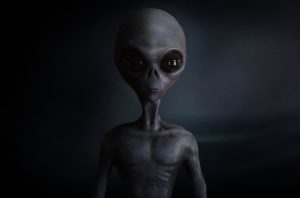
You ’re a true TV buff if you can remember these short-lived offshoots of popular TV shows.
The humorous X-Files spinoff
Amidst the spooky aliens and supernatural investigations, three characters (ironically) called “the Lone Gunmen” provided comic relief throughout the run of The X-Files. They appeared from time to time to point out to agents Mulder and Scully the many different, bizarre, secret conspiracies that really made the world go ‘round. The tertiary characters were so popular that in 2001 Fox asked X-Files creator Chris Carter to make The Lone Gunmen, a standalone series. The much more comedic take on the X-Files universe didn’t gain wide support and was quietly canceled after 13 little-watched episodes.
The Diff ’rent Strokes spinoff about a divorced radio host
https://www.youtube.com/watch?v=VAYPN...
McLean Stevenson had a good thing going and he had to go and ruin it. Audiences loved him on M*A*S*H as Col. Henry Blake, but after three seasons with the show, he wanted to move on to other things. His character was killed off, and Stevenson starred in multiple short-lived flops, such as The McLean Stevenson Show, In the Beginning, and Hello, Larry. The latter was introduced in 1979 as a spinoff of the extremely popular Diff’rent Strokes. Stevenson popped in as an old friend of Philip Drummond (Conrad Bain), who then headed to Portland, Oregon, to work as a talk radio show host after recently getting divorced. Think Frasier but not as good or popular. It was critically maligned, and for a while became a frequent butt of Johnny Carson monologue jokes. After 38 episodes, it was goodbye, Larry.
The Melrose Place spinoff about models
The rich-teen soap opera Beverly Hills, 90210 was one of the first big hits for the Fox network. In 1992, producers set up a spinoff, Melrose Place, which took place at an apartment complex where all the residents were exceptionally good-looking and had soap opera problems. That, too, was a hit, and so in 1994 the spinoff spun-off a spinoff called Models, Inc. It was about a Los Angeles modeling agency head up by the mother of Heather Locklear’s Melrose Place character. Despite following the same formula as its predecessors (wealthy, attractive, dramatic people), the show finished 113th in the ratings for the 1994-95 season and was canceled.
The Flintstones clone set in Ancient Rome
It’s not a direct spinoff, per say, but The Roman Holidays owes its brief life to “the modern Stone Age family.” The concept of an animated sitcom set in ancient Bedrock led Hanna-Barbara to produce a very similar sitcom called The Jetsons, set in the distant, technology-driven future. In 1972, after both shows had ended their runs, the animation studio tried to use the formula again with this show about a family set in Rome, circa the year 60. It lasted just 13 episodes on NBC’s Saturday morning schedule.
The post Completely Forgotten TV Spinoffs appeared first on Trivia Books and Facts | Uncle John's Bathroom Reader.


